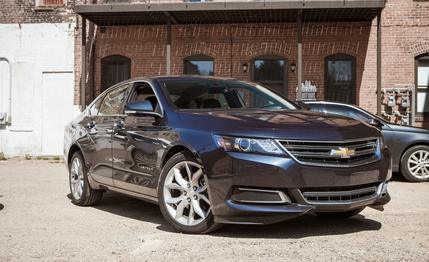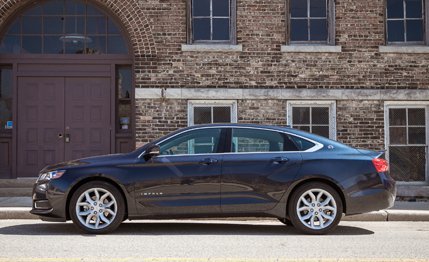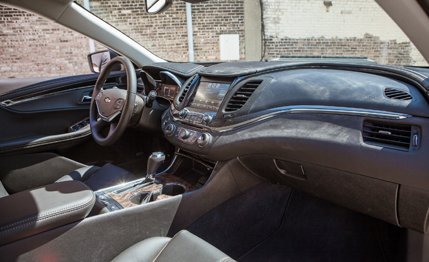
 Instrumented Test
TESTED
Instrumented Test
TESTED
To car classicists, the Chevrolet Impala is a tale of squandered potential as, with each passing year, the exuberant jet-age styling of the original 1958 model morphed into the amorphous last generation. To enthusiasts, recent Impalas have been nothing more than rental-lot punishment and a punch line. But to Chevrolet, the car is serious business. Through most of the aughts, the Impala was among the bestselling cars in the U.S., moving a high of 311,128 units (emphasizing the word “units” here) in 2007, a year it led the domestic-car sales charts. Two years later, though, sales had fallen to 165,565, and they’ve hovered around that point ever since.


Losing the W Is a Win
To get sales headed back in the right direction and to quell the criticisms of classicists and enthusiasts alike, the Impala was completely reinvented for 2014. Epsilon bones shared with Buick’s LaCrosse replace the outgoing car’s so-called W-platform, and creased, scalloped, and chromed surfaces stand in for the W-car’s innocuous sheetmetal. The new look doesn’t have the bat-wing audacity of the second-gen 1959 model, but it at least taps into some of its excitement. A new powertrain portfolio includes two inline-fours (one of them with help from GM’s eAssist mild-hybrid setup) and the 3.6-liter V-6 tested here.
Classicists and other romantics will appreciate the enormity of this latest Impala’s interior. Since its resurrection in 2000, the Impala seemed like a bad optical illusion that got smaller when you opened the doors, but no more. It’s mammoth inside, and between the front and rear seats, there is a combined 5.7-inch increase in legroom over that in the last Impala—this within a wheelbase that is 1.2 inches longer. The front seat’s 45.8 inches of legroom are perhaps the most telling. With the driver’s seat all the way back, this six-foot, seven-inch author could barely reach the pedals, the first time that’s happened in hundreds of test cars. Even at that extreme, the rear seat remains perfectly livable for average-size adults. With the front seat adjusted for real people, even the abnormal can get comfortable in the back. As does Chevrolet’s Malibu, though, the Impala feels narrow, an impression only exacerbated by its obvious length. It actually is slightly narrower inside than its predecessor, and amorous teenagers will be disheartened to hear that a bench front seat is no longer available.


This Is Where It Gets Really Surprising
The driver’s bucket is nevertheless comfortable and is a far more appropriate perch from which to pilot the 2014 Impala. The car’s structure feels rock solid and imparts an unflappable feeling reinforced by surprisingly deft suspension tuning. Recent history had convinced us that Impalas are appliances, a conclusion that is no longer accurate. A 0.82-g lateral-acceleration number on the skidpad is pretty standard grip in this unexciting class, but that number doesn’t do justice to the way the Impala feels on its way there—or on a winding road. Wheel and body motions are controlled and disciplined but not abusive. The quick, progressive steering sets the standard for this segment without being disruptively twitchy or otherwise falling out of step with a mission that still includes serenity—but no longer tempts you to fall asleep. There’s an enthusiasm in this car that’s been missing from Impalas ever since the short-lived rear-drive SS bit it in 1996.